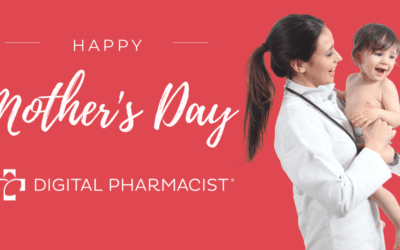Starting any new business can be daunting and pharmacies come with their own unique learning curve. In a competitive market, pharmacists have to work hard to stand out from the crowd and scale their business successfully.
There are a lot of components to a good pharmacy, but it starts with creating a solid business plan and brand. To help you prepare, we’ve created a guide that walks you through how to start a pharmacy, from business plan to grand opening.
Create a Business Plan
Before getting into the nuts and bolts of opening your pharmacy, it’s important to start with an overview of the business you want to build. A business plan is a roadmap for your pharmacy, laying out all the different components in one place and acting as a manual for growth.
How to Start a Pharmacy Business Plan
A pharmacy business plan should contain the following:
Executive Summary
A high-level summary, highlighting the important points to give potential investors all the information they need on a single page.
Description of Business
Includes details like your:
- Pharmacy niche and branding
- Target market/audience
- Location and space
- Potential team members and titles
- Potential expenses
Description of Service(s)
What services do you plan to offer your target market? This section covers your future pharmacy’s sources of revenue, including potential prescription stock, retail products, or specialty and healthcare services.
Marketing Plan
You need to have a good handle on the competition and a plan for promoting yourself. This section should contain an in-depth competitor analysis, ideas for marketing and sales strategies, and a SWOT analysis of your business.
Financial Plan
Projected revenue, expenses, and major costs, such as lease timelines, mortgage payments, and estimated payroll go here. Also include any financing information and an exit strategy, if possible.
To get you started, here is an excellent example of a pharmacy business plan, broken down by section in detail.
Define Your Pharmacy Brand
A brand encapsulates your business and determines how customers will identify you, interact with you, and use your products or services.
What Makes a Good Brand?
Many people think of a brand as the visuals, the logo, and color schemes you see on any website or business card. But there’s a lot more to it.
Key factors of a brand include:
Mission and Vision Statements
A mission statement defines your purpose and values as a company, spelling out what you do, how, and why. Your vision statement breaks down future goals for your business and how you will act on your mission.
Value Proposition
In order to stand out in the market, you need to identify your unique value as a business and define it in a value proposition statement. This could be anything from location (“the only pharmacy in town”) or background (“family-run pharmacy”), to competitive pricing, standout customer service, or specialized services.
Naming and Trademarking
Choosing a name can be difficult, and you want it to be easy to remember and tell people who you are and what the business is about. If you pick a unique name or want to make sure no one else can use it, consider applying for a trademark before you open.
Visual Identity
The face of your brand, visual identity covers your logo, brand color palette, typography, images, graphics, and other elements businesses use to market and promote themselves.
Set up Your Website
Now you have branding in place, it’s time to introduce your business to potential patients online. Every successful pharmacy business owner should have a website and social media accounts that patients can visit to access location and service information.
Getting Your Domain and Social Handles
The first step to setting up your pharmacy website is buying a domain name. Make sure that your ideal domain name is available by plugging it into a domain search database, such as Instant Domain Search.
Social media accounts can boost your position in search engine results and help draw visitors to your site. Set up profiles on Twitter and Instagram and a Facebook Business Page with user names that are as close to your business name as possible.
Pharmacy Website Basics
If you plan to offer digital tools and services or collect patients’ health information, make sure that your pharmacy website is HIPAA-compliant.
A successful pharmacy website should contain your:
- Brand identity
- Location and contact information
- Introduction to products, services, and staff
- Links to social media accounts
For more tips on marketing your pharmacy business online, check out our latest ebook.
Pick a Pharmacy Location
Before you start scouting, it’s a good idea to ask yourself a few questions about your area of choice:
- How many other pharmacies are there?
- What services do nearby pharmacies offer and are they direct competitors with you?
- Is the prescription base big enough for everyone?
Assessing the level of competition in your ideal locations can help you narrow things down and assess potential opportunities.
What Makes a Good Business Site
Real estate agents say it’s all about “location, location, location,” but what does that mean for a pharmacy business? Here are a few factors to consider when searching for a pharmacy site:
Accessibility
The amount of daily foot and car traffic, visibility from the road, convenience of parking, entrances, and exits, and whether the site has room for a drive-thru or curbside pickup.
Size
Is there room enough to operate and grow? Think about how many locations you want and the services, stock, and staff you’ll need to maintain.
Previous tenants
If there were other pharmacies in the same space, try to figure out what made them leave or close. It could mean there’s an active customer base or it could be a warning sign.
Other business sources
Look for sites located near complementary businesses, like doctor’s offices or other medical facilities which help guarantee good foot traffic and offer opportunities for future collaboration.
Determine Your Financials
Your business plan should include an estimate of startup and working costs for your pharmacy, as well as the types of funding you plan to pursue. Determining your pharmacy’s financial needs will help prepare you for applying for loans or approaching potential investors.
Here are some of the costs you should keep in mind:
Build-out costs: Includes mortgage down payment, construction, renovation, fixtures, and interior design.
Inventory: Covers your initial stock of prescription and OTC drugs and other retail or healthcare products.
Operating expenses: Calculate how much you’ll need to cover day-to-day expenses for at least 6 months after you open to allow time for the pharmacy to make a profit.
Once you have funding in place, keep track of current and future costs with a pharmacy income statement, which calculates your:
- Revenue
- Sale deductions
- Net sales
- Cost of goods sold (COGS)
- Gross profit
- Net profit and profit margins
- Operating expenses
Get Your Licenses in Order
All new businesses require paperwork and that’s doubly true of pharmacies, which tend to be heavily regulated. Get started by registering as a business entity in your state, requesting your federal Employer Identification Number (EIN), and opening your first business bank account.
After you complete the business basics, check for state and federal pharmacy operating licensing requirements and permits, which will vary by location.
Typical requirements include:
- State pharmacy license or permit
- Controlled substance registration
- National Council for Prescription Drug Programs (NABP/NCPDP) number
- Drug Enforcement Agency (DEA) number
- National Provider Identifier (NPI) number
Keep in mind that if you also plan to practice in your own location, you need to meet state requirements for pharmacists as well.
Prep for Opening
You’re nearly ready to open for business, but before you do, there are some important last-minute details you’ll need to oversee.
Investing in Digital Tools
To simplify operations, start off strong by streamlining your workflow and offering patients a multichannel digital experience. Install a pharmacy management system (PMS) to keep you running efficiently and an interactive voice response (IVR) solution to manage inbound calls. Digital communications software can offer secure messaging and help you identify clinical opportunities.
Contact us today for a free demo of our IVR solution.
Inventory Ordering
Look for wholesalers you can develop long-term relationships with, not just ones that offer lower costs. Try and ask for sample orders of prescription and OTC medications initially to keep costs down and tide you over while your pharmacy grows.
Front of Store Flow and Design
Think about what you want patients to see when they walk through your door. Consider the overall store layout and how best to position products, staff, and counters. Generous aisle spacing and clear paths to checkout lines can make a big difference to traffic flow and revenue.
Online and Offline Advertising
Try to position signage towards high-traffic areas so people will see it as they drive by and contact local publications for a new business interview. If you haven’t already, start working on a digital marketing strategy, leveraging social media channels and paid ads to generate interest in your brand opening and attract visitors to your website.
Last but not least, don’t forget to celebrate your new achievement! Throw a party for yourself and your staff to kick off this new phase of your life.
More Pharmacy Management Resources
For more about running a successful pharmacy, check out our resources for pharmacy management.



